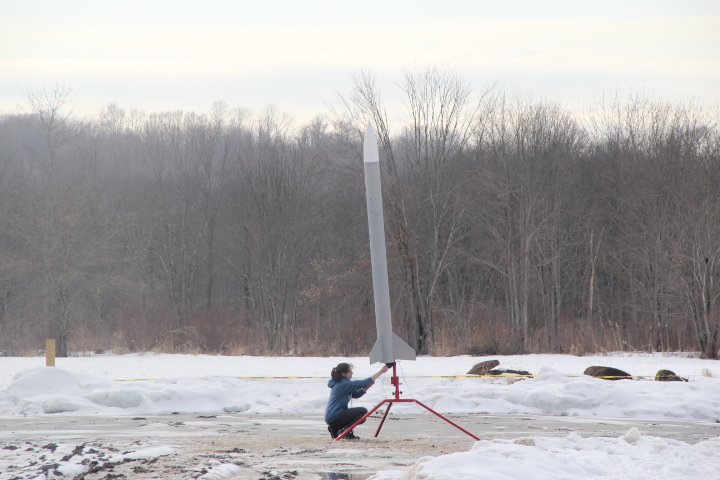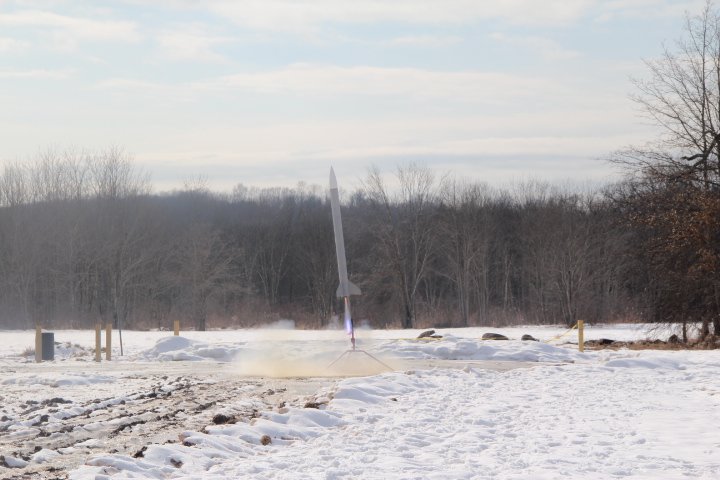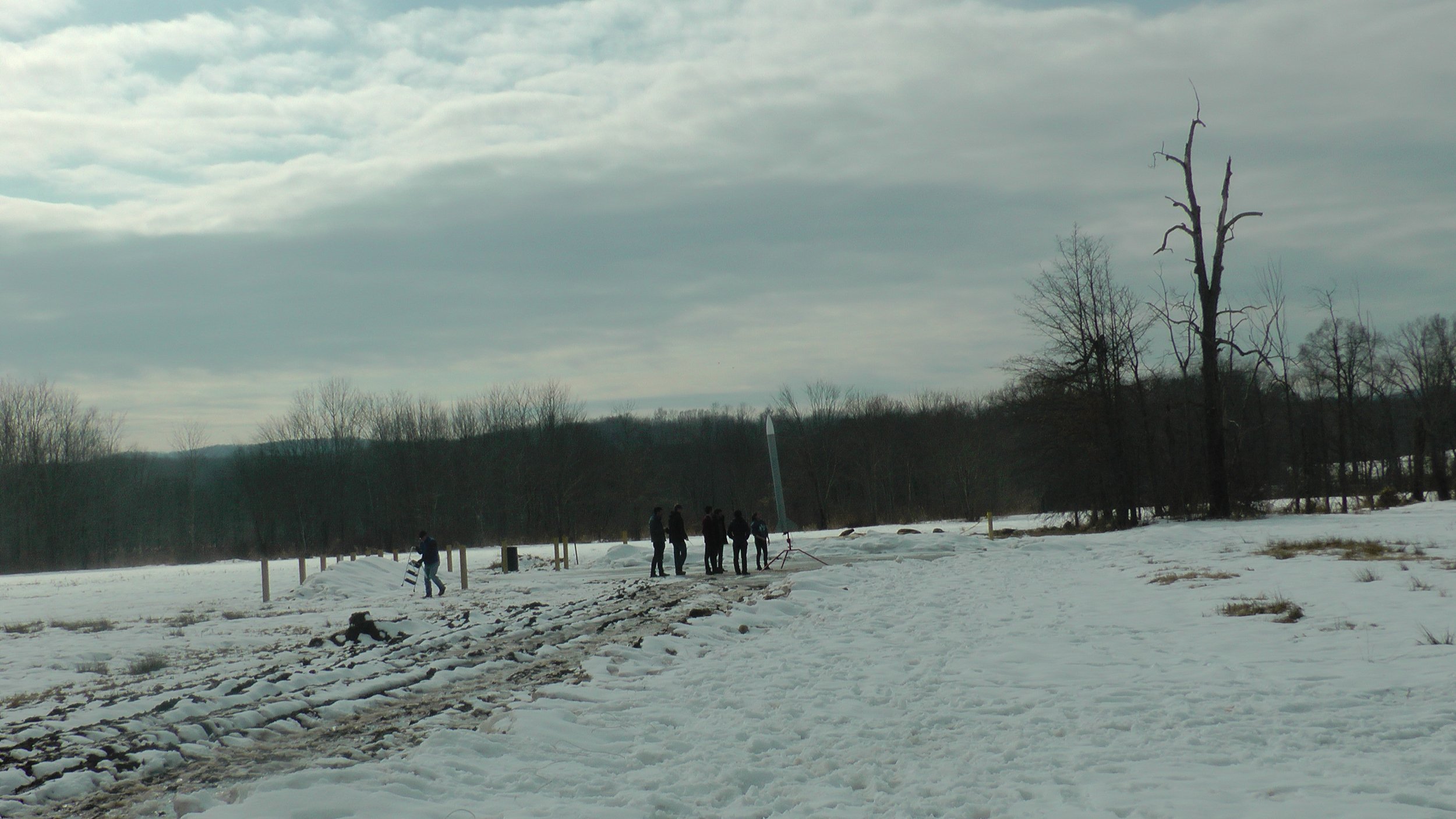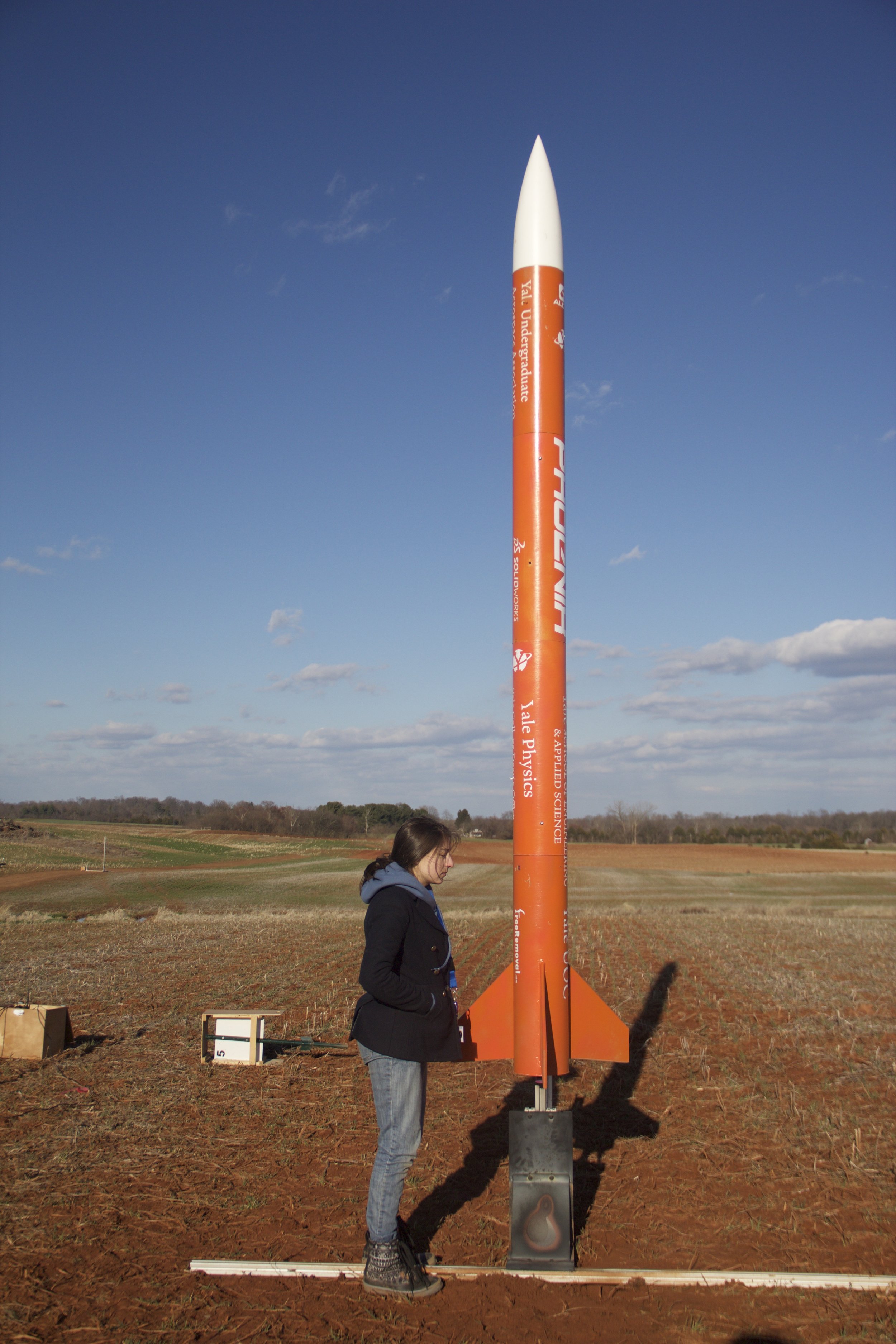Battle of the Rocket 2015
The Rocket Competition team designed and constructed rockets and a payload to compete in two events in the Battle of the Rocket Competition (BOTR). For the Target Altitude event, a rocket that could reach exactly 1,625 feet using a G motor was built. The Planetary Rover event required the construction of a rover and rocket system which could be launched to at least 1,000 feet on a K motor. The rover was contained within the 11-foot tall, 7.5-inch diameter rocket during its ascent, and was released with its own recovery system to land and perform a series of tasks on the ground. The competition was held on March 28th in Culpeper, Virginia.
In this core YUAA project, members of all levels of experience came together to encourage interest and develop experience in rocketry, aerospace and engineering. Members gained experience with engineering tools and construction techniques, including laser cutting, electronics and circuitry, and CAD software modeling, as well as other skills, like documentation and design reviews.
Skylark, our target altitude entrant in BOTR.
In mid-November 2014, the rocket competition team tested “Skylark,” their final iteration for the 2015 Battle of the Rockets Target Altitude Competition. The goal of the competition was to come as close as possible to a peak altitude of exactly 1,625 feet. Many YUAA members went out to the fields of Cobleskill, New York, for the test launches. In the launch, the gold-colored rocket Skylark fought against growing winds to reach an altitude of roughly 1,280 feet before deploying its parachute and gliding back to the earth.
The Rocket Competition team members began the 2015 spring semester with much enthusiasm. They focused on building the final Planetary Rover event rocket (Phoenix), which was 11 feet tall and 7.5 inches in diameter. Additionally, they worked on the final rover payload, Ground Lark, which deployed out of the rocket for the competition later in 2015.
The team’s rover design was simple and lightweight: one wheel on each end of a wide body section with a stabilizing tail. They constructed the frame out of aluminum, used spiked high-traction wheels to navigate through rough terrain, and designed the tail to unfold once the rover was released.
The chassis was a simple rectangular prism chosen for ease of manufacturing. The prototype chassis was constructed from laser-cut plywood, while the final design was constructed from plywood and aluminum for on rigidity and strength testing. The prototype wheels were made with foam core, but the final material was rigid acrylic plastic. Lastly, the prototype tail was 3D-printed thermoplastic, but the final tail was spring-loaded and folded into the body.
Phoenix had several launches over the course of two days. During the first launch, the rover was successfully deployed, but there were issues with turning it on at the launchpad. The rover landed safely in spite of this setback. After ground testing, the rover worked better than prototype versions. Unfortunately, during the second launch, there was an oversight during a reconfiguration which prevented the successful deployment of the rover. The parachute and landing recognition systems were shown to work despite this error. The full autonomous sequence was demonstrated to work, and the rover's parachute deployment and initial marker drop functioned as expected during recovery after the second launch. Check out the sequence of Pheonix’s rise below:








